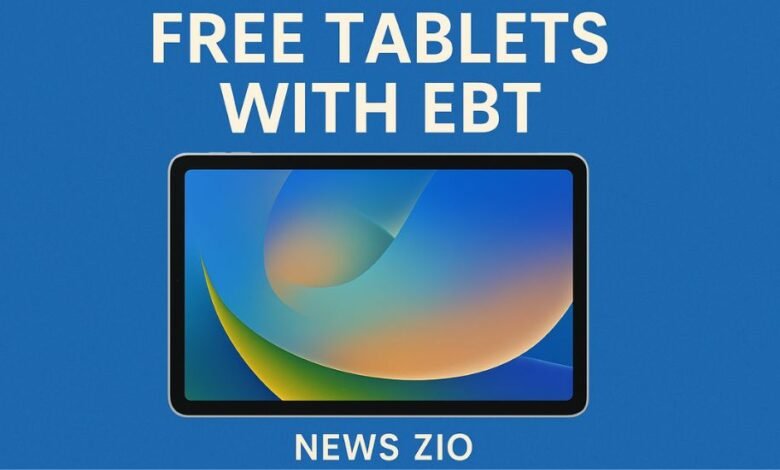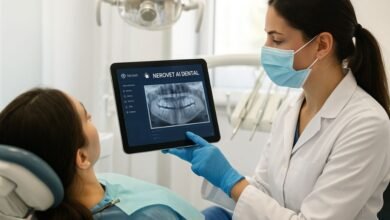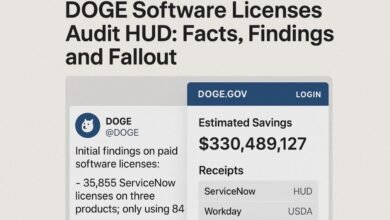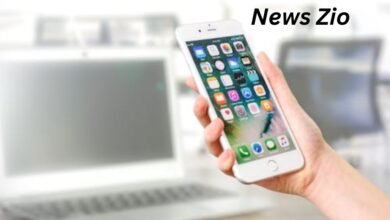Free Tablets with EBT: Eligibility, Programs, and How to Apply

In today’s digital era, access to technology is more important than ever. Tablets and smartphones have become essential tools for communication, education, healthcare, and even employment opportunities. Unfortunately, not every household can afford these devices, especially families relying on government assistance programs. This is where the concept of “free tablets with EBT” has gained attention. Many low-income families wonder if their Electronic Benefit Transfer (EBT) card, which they use for food assistance programs like SNAP, can also help them qualify for a free or discounted tablet.
This article provides a detailed look into the programs, providers, and nonprofit organizations that may help eligible households get access to affordable tablets. It also clarifies the role of federal programs such as Lifeline and the now-discontinued Affordable Connectivity Program (ACP), while offering practical advice on how to apply.
What Does “Free Tablets with EBT” Mean?
EBT, or Electronic Benefit Transfer, is primarily used to deliver funds for food assistance through programs like SNAP (Supplemental Nutrition Assistance Program). While EBT itself does not directly pay for electronic devices, it can serve as a qualifying proof of low-income status when applying for federal communication assistance programs or nonprofit technology initiatives.
Therefore, when people search for “free tablets with EBT,” they are typically referring to special offers from providers who accept participation in government assistance programs—like SNAP via EBT—as proof of eligibility for discounted or free devices.
Affordable Connectivity Program (ACP) – Ended but Influential
For several years, the Affordable Connectivity Program (ACP) was a key way for families to access low-cost internet and discounted devices, including tablets. Eligible households could receive a one-time discount of up to $100 toward a tablet, laptop, or desktop computer, provided they contributed a co-pay of $10 to $50.
However, the ACP officially ended on June 1, 2024, due to lack of federal funding. While some providers still mention ACP in their offers, the program is no longer active. This has caused confusion among many applicants who still see references to it on carrier websites.
Even though ACP is no longer available, its existence paved the way for new initiatives from service providers and nonprofit organizations that continue to offer device assistance to low-income families.
Lifeline Program – The Active Federal Option
The Lifeline Program, managed by the Federal Communications Commission (FCC), is currently the primary federal benefit that helps low-income households access communication services. Unlike ACP, Lifeline has been around for decades and remains active.
Key Features of Lifeline:
-
Provides a monthly discount of up to $9.25 on phone or internet service for eligible households.
-
For families living on tribal lands, the discount can be as high as $34.25 per month.
-
Does not directly provide free devices, but many partner providers include promotional offers like free or discounted tablets.
EBT recipients can use their participation in SNAP or other assistance programs as proof of eligibility when applying for Lifeline.
Free Tablets Through Service Providers
While the government itself does not hand out tablets, certain service providers participating in Lifeline use device incentives to attract eligible customers. These offers vary by state, stock, and company policy.
1. AirTalk Wireless
One of the most well-known providers offering free tablets with EBT eligibility is AirTalk Wireless. Their promotional programs allow qualifying individuals to apply for a free or discounted tablet after verifying eligibility through SNAP or income-based criteria.
How it Works:
-
Enter your ZIP code on the AirTalk Wireless website to check availability.
-
Upload proof of EBT or other qualifying program participation.
-
Select a tablet from their available models (brands may vary, such as Samsung or Apple, depending on stock).
-
Approved applicants receive the device shipped directly to their address.
AirTalk’s program has become popular in states like Texas, Georgia, and Pennsylvania.
2. Other Lifeline Providers
Several other companies participate in the Lifeline program and occasionally run promotions that include tablets or smartphones:
-
SafeLink Wireless – Focused on free smartphones, but sometimes offers discounted tablets.
-
StandUp Wireless – Provides affordable internet services with limited device offers.
-
Whoop Connect – Markets low-cost tablets that were once tied to ACP but still promote discounted options.
These promotions vary frequently, so applicants must check directly with providers for up-to-date availability.
Nonprofit and Community Programs Offering Free Tablets
Besides Lifeline providers, various nonprofit organizations and community groups also work to bridge the digital divide by offering refurbished or donated devices to low-income families, students, and seniors.
1. Computers With Causes
This national nonprofit redistributes donated tablets, laptops, and computers to eligible families, veterans, and students. Applications are reviewed on a case-by-case basis.
2. The On It Foundation
Operating in Florida, this organization provides free computers and technology training to K–12 students from low-income families.
3. Computers for Kids
Serving Idaho, Washington, Oregon, and Utah, this program refurbishes and donates computers and tablets to schools and individual students.
4. Interconnection
Based in Seattle, Interconnection offers refurbished computers and tablets at accessible prices, often working with schools and nonprofits to ensure wide reach.
5. Local Charities and Churches
In many areas, local community centers, churches, or libraries may host device donation drives where low-income families can request free or low-cost tablets.
Who Qualifies for Free Tablets with EBT?
Eligibility usually depends on participation in government assistance programs. Households may qualify if they:
-
Receive SNAP/EBT benefits.
-
Participate in Medicaid, SSI, Federal Public Housing Assistance, or Veterans Pension Programs.
-
Have income at or below 135% of the Federal Poverty Guidelines.
-
Live on tribal lands with additional qualifying benefits.
Applicants must often provide proof such as a SNAP card, Medicaid card, or tax returns during the application process.
How to Apply for Free Tablets with EBT
-
Find a Provider or Nonprofit – Identify which companies or organizations in your state currently offer tablets.
-
Check Eligibility – Confirm that your household qualifies based on EBT/SNAP or income level.
-
Prepare Documents – Gather proof of identity, residence, and program participation.
-
Submit Application – Apply online through a provider’s portal or nonprofit application form.
-
Wait for Approval – Once approved, devices are typically shipped within a few weeks, though times vary.
Limitations and Things to Watch Out For
-
Not 100% Free – Even when programs advertise “free,” some may require a small co-pay (typically $10–$50).
-
Availability Varies – Not every provider serves every state, and stock levels can run out quickly.
-
Scams Exist – Beware of websites that promise free tablets but ask for unusual fees or sensitive personal data. Stick to known providers and nonprofits.
-
Data Costs Still Apply – A free tablet doesn’t guarantee free internet. Families may still need to budget for service plans, though Lifeline discounts can help.
Real-Life Experiences
Online communities like Reddit’s Food Stamps forum reveal mixed experiences:
-
Some users reported success with AirTalk Wireless, stating they received a free tablet without issues.
-
Others highlighted that many providers have scaled back device giveaways after the end of ACP.
-
A common takeaway is that free tablets with EBT are possible but depend heavily on timing, location, and provider offers.
The Future of Free Tablets with EBT Programs
While ACP’s closure reduced federal device assistance, there is still momentum from nonprofits, community groups, and Lifeline providers to address the digital divide. Policymakers continue to debate expanding funding for digital equity programs, meaning more opportunities may arise in the future.
In the meantime, families relying on EBT can still explore Lifeline and nonprofit channels to secure access to technology that supports education, healthcare, and job opportunities.
Conclusion
The idea of free tablets with EBT is both real and limited. EBT itself does not directly provide tablets, but it serves as a qualifying factor for other programs like Lifeline. Providers such as AirTalk Wireless and nonprofits across the country continue to step in to fill the gap left by the Affordable Connectivity Program. With persistence, research, and the right eligibility documents, low-income families can access free or discounted tablets to stay connected in the modern digital world.
Access to technology should not be a privilege—it’s a necessity. Programs offering tablets for EBT recipients are helping bridge the digital divide one household at a time.
Written by News Zio



